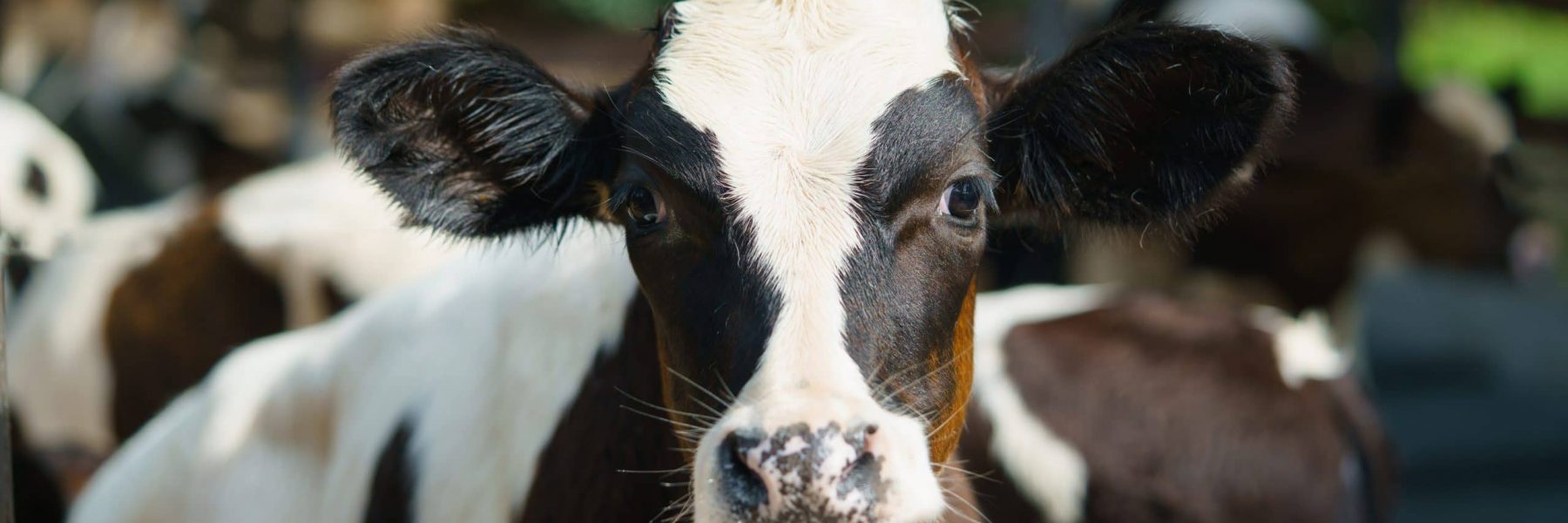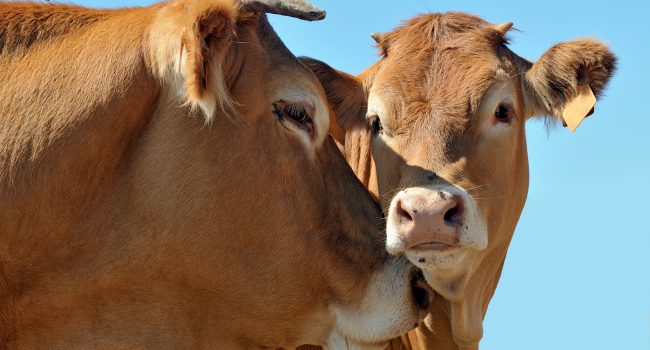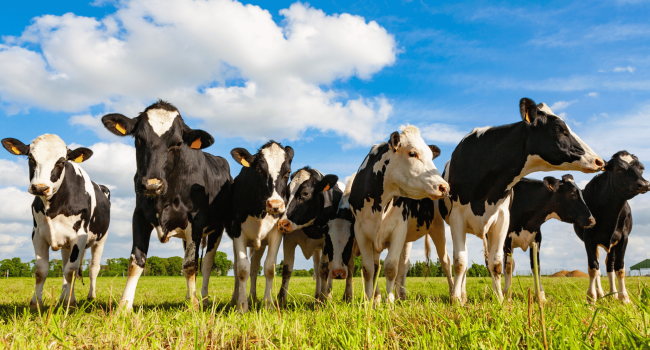Intestinal inflammation in livestock
Intestinal inflammation can impair the absorption of nutrients and up to 30% of the energy ingested can be used to manage this process instead of contributing to performance. Making sure that both energy and nutrients are efficiently absorbed and used by the animal is the main goal of nutritionists
Farm animals are more vulnerable to changes that can result in inflammation due to their intense metabolism. Environmental events, critical production periods or modification of the diet characteristics can also cause intestinal inflammation in production animals. These challenges can affect all animal species with various consequences:
In a weaning or feed transition period, new formula is first recognized as stranger by the organism
During vaccination, periods of heat stress, gestation, farrowing, calving, or lactation intense fat metabolism occurs
Peaks in laying, lactation, and high average daily gain all require high energy needs
These factors of stress trigger inflammatory, oxidative stress and immune system warning reactions, which are a major phenomenon in animals’ life. These events can cause a lack of performance and profitability. Indeed, the dysfunction of the intestinal barrier can lead to an increase of intestinal permeability (leaky gut syndrome).
For example, this may allow endotoxins (a component of the walls of gram-negative bacteria) to breach the intestinal barrier, which causes local and/or systemic inflammatory reactions. The immune response can then trigger more serious conditions.
The recent literature describes that up to 30% of the ingested energy can be directed to manage these processes instead of used in the body for gain or performance. Hence, assessing barrier integrity by modulating the intestinal inflammation status of the animal is of the utmost importance.
Plant extracts in vitro research results
Various solutions are available in the animal nutrition market to contribute to support animals during those stressful periods and reduce the use of antibiotics. Active ingredients from plant extracts appear to offer a solution. A selection of plant extracts combinations, known from centuries in the traditional Asian pharmacopeia for having individual anti-inflammatory, anti-oxidant, and analgesic properties have been studied.
The combination is made from two plants containing alkaloids for one and neolignans for the second. Alkaloids represent the largest single class of plant secondary metabolites having a remarkable range of pharmacological activity. They are recognized for various biological effects including antimicrobial and anti-inflammatory activities.
Neolignans are also planted secondary metabolites derived from the oxidative coupling of phenylpropanoids. Those phenolic compounds are known for their antioxidant and anti-inflammatory actions.
A university trial has been conducted in Beauvais (France) to assess the synergistic impact of the two plant extracts on both intestinal integrity and inflammatory process. Human colon cells have been cultivated and then stimulated with a severe model of inflammation (cytokines cocktail).
The plant extracts have been tested alone or in combination to evaluate their impact on Trans-Epithelial Electric Resistance (TEER) and Interleukins 8 secretion (IL-8).
TEER is an indicator of intestinal integrity. Highest is the TEER, well preserved tight junctions of intestinal cells are and will ensure good absorption of nutrients. IL-8 are pro-inflammatory markers and their productions are reflecting the level of the inflammation.
With the inflammatory challenge, TEER is significantly decreased vs the negative control, meaning that the intestinal integrity is altered (see Table 1).
Powerjet results of the in vitro research
Table 1: Results of the in vitro research
a, b, c with P< 0.05
With the inflammatory challenge, TEER is significantly decreased vs the negative control, meaning that the intestinal integrity is altered. The addition of the combination of the alkaloids and neolignans plants brings a significant improvement of the intestinal integrity in situations where alkaloids alone or neolignans did not bring any intestinal integrity improvement.
With the inflammatory challenge, basal IL-8 secretion is significantly increased, meaning that the challenge is working. The combination of plant extracts decreased the secretion of basal IL-8, showing its ability to limit the over activation of the immune system after an inflammatory challenge. Alkaloids or neolignans alone were not able to reduce the secretion of basal IL-8.
These results justify the interest of such patented combination and prove its synergistic effect on the preservation of intestinal integrity by avoiding leaky gut syndrome and modulating the immune response to an inflammatory challenge.
Plant extracts in vivo research results
The benefits of a combination of plant extracts (alkaloids + neolignans) on animal performances have been demonstrated by several R&D and field trials in swine, broilers, layers, and ruminants. These trials prove better management of the inflammatory response than the control groups. To illustrate the benefits of the combination in dairy cows, a field trial conducted in France is presented below (Table 2). The aim of this trial was to evaluate the effect of the plant extracts combination around the calving period.
In dairy cows, the calving period is a stressful period that is characterized by a sudden increase in energy requirements imposed by the onset of lactation or by a decrease in voluntary dry matter intake. The resulting negative energy balance is further aggravated by fetal metabolic demands and the prioritization of nutrients toward milk production. Homeostasis of all the energy substrates is altered during this time and can lead to an increase in intestinal inflammation and oxidative stress.
The focus of the trial highlighted below was on systemic inflammatory and oxidative stress markers before and after calving. In addition, the impact on fat reserves mobilization and on milk production was also studied.
The trial included a total of 25 Holstein dairy cows, divided into two groups. A control group (with a corn silage-based diet) with 12 animals and a test group of 13 animals received the plant extracts combination. The combination of plant extracts was incorporated in the concentrated feed three weeks before calving and during lactation.
Inflammation & oxidative stress evaluation
Blood samples were sampled on all the dairy cows of each group one week before calving and one week after calving in order to evaluate their inflammatory and oxidative status. As an inflammatory marker, haptoglobin was selected and Super Oxide Dismutase (SOD) as a marker of oxidative stress.
Haptoglobin is a positive inflammatory marker meaning that an increase in its concentration leads to an increase in the inflammatory status of the animal. SOD activity is linked to the capacity of the organism to counteract free radicals: the higher SOD concentration is, the lower the oxidative stress is.
Powerjet inflammation and oxidative stress markers concentration
Table 2: Inflammation and oxidative stress markers concentration
The combination of plant extracts limited the increase of haptoglobin concentration (-56% vs negative control), meaning that it helped to limit inflammation. Regarding SOD activity, a strong increase in its activity was observed (+204%), which demonstrated that the plant extracts combination reinforced the antioxidant capacity of the dairy cows.
Mobilization of fat reserves
The calving period is linked with energetic (carbohydrates and amino-acids) deficit and consequently to the fat reserve mobilization. To evaluate the phenomenon of fat reserves mobilization, two blood markers were analyzed (Table 3): the level of NEFA (Non-Esterified Fatty Acids) and BHB (Betahydroxibutyrate) one week after calving. In conditions of fat reserve mobilization, an increase of NEFA and BHB is observed.
Powerjet mobilization of fat reserves markers concentration
Table 3: Mobilization of fat reserves markers concentration
The group supplemented with the combination of plant extracts had a lower NEFA (-26%) and BHB (-31%) concentration compared to the control group. This suggests a lower fat reserves mobilization during the peripartum period for the dairy cows supplemented with POWERJET® and consequently, an energy deficit less severe during the beginning of the lactation period.
Milk production
The performance in terms of milk production was also studied during the three first months of lactation. On average an improvement of milk production by +2.3 kg/cow/day was observed for the treated group.
Powerjet average milk production per animal
This trial allowed us to highlight the link between a stressful event like calving and different parameters that can impact production: intestinal inflammation, oxidative stress but also fat reserves mobilization. Blood samples analysis has demonstrated the benefits of plant extracts supplementation on the reduction of inflammatory, oxidative stress, and mobilization reserve markers. Thus, a positive impact on milk production occurred.
Complimentary trials have also shown positive impacts on fattening animals (beef and lamb). The improvement of zootechnical performances (ADG, live weight, reduction of conversion index) is linked to an improvement of the ruminal morphology through higher papillae villi allowing the maintenance of a good rumen and intestinal integrity.
Synergistic effects of plant extracts
Many types of stress can trigger inflammatory, oxidative stress and immune system warning reactions which are major challenges in animals’ life, causing a lack of performance and profitability. Combining plant extracts with different properties delivers greater benefits from synergies, enabling animals to better face inflammatory and oxidative processes around sensitive and stressful periods.
POWERJET® represents the most powerful combination of these plant extracts, based on work done by ADM’s R&D department. POWERJET® is composed of plant extracts, known from centuries in the traditional Asian pharmacopeia for having individual anti-inflammatory, anti-oxidant and analgesic properties. The most powerful combination was thus selected thanks to its synergistic effects to create the patented product POWERJET® made from two plants containing alkaloids for one and neolignans for the second.
Used in swine, poultry and ruminant operations, POWERJET® aims to peacefully manage these transition periods by maintaining the feed intake and levels of nutrients while allocating the maximum of “efficient energy” to the animals’ production needs. This is done by modulating oxidative stress, immune response, and inflammatory response at the intestinal level.
The benefits of a combination of plant extracts have been demonstrated through in vitro research and confirmed by in vivo studies, including trials on R&D facilities and in the field.


